Moniek Bloks's Blog, page 12
June 17, 2025
Empress Dowager Xiaochong – The posthumous Empress Dowager of the Eastern Han Dynasty who was given a fiefdom
Empress Dowager Xiaochong was the mother of Emperor Huan of the Eastern Han Dynasty. Her husband was the posthumous Emperor Xiaochong.[1] She was not an empress in her lifetime but was made an empress dowager after her death.[2] Empress Dowager Xiaochong received many honours and privileges.[3] She was even granted her own fiefdom, which was the first time a mother of the Emperor of the Eastern Han Dynasty had ever received such an honour.[4]
In circa 110 C.E., Empress Dowager Xiaochong was born in Hejian (located southeast in modern-day Hebei Province).[5] Her personal name is Yan Ming. Her parents are unknown.[6] In 130 C.E., Yan Ming became a concubine to Liu Yi (the Marquis of Liwu and the grandson of Emperor Zhang).[7] Liu Yi had a main wife named Lady Ma, but they did not have any children.[8] In 132 C.E., Yan Ming bore Liu Yi a son named Liu Zhi (who would become known in history as Emperor Huan).[9] She also had two other known sons and two daughters.[10] In circa 140 C.E., Liu Yi died. He was buried in Hejian.[11] His son, Liu Zhi, inherited the title of Marquis of Liwu.[12] If it hadn’t been for the events of the royal succession, Yan Ming would have been destined for a life of insignificance.[13]
In 145 C.E., Empress Dowager Liang Na was dissatisfied with Emperor Zhi and looked for a replacement.[14] She chose Liu Zhi to replace Emperor Zhi instead.[15] She summoned Liu Zhi and betrothed him to her sister, Liang Nuying.[16] On 26 July 146 C.E., Emperor Zhi suddenly died.[17] On 1 August 146 C.E., Liu Zhi ascended the Chinese throne as Emperor Huan. In 147 C.E., Emperor Huan married Liang Nuying.[18]
Emperor Huan’s father, Liu Yi, was made the posthumous Emperor Xiaochong.[19] Emperor Xiaochong was reburied in Boling.[20] Yan Ming was given the title of “Worthy Lady of the Funerary Park at Boling”[21]. Worthy Lady was the highest imperial concubine rank (directly below the Empress position).[22] However, Imperial Consort Yan Ming was forced to serve at her husband’s tomb in Boling.[23] This meant that she could not live with Emperor Huan in the imperial palace.[24] Emperor Xiaochong’s main wife, Lady Ma, was also made Worthy Lady of Boling.[25] Imperial Consort Ma was also appointed the guardian of Emperor Huan’s younger brother, Liu Shi (the Prince of Pingyuan).[26]
On 6 April 150 C.E., Empress Dowager Liang Na died. Emperor Huan summoned his mother, Imperial Consort Yan Ming, to the imperial palace.[27] Imperial Consort Yan Ming was given an imperial seal and ribbon.[28] She took up residence in the Northern Palace.[29] She was given a fiefdom of nine counties from Julu Commandery (located in the southern region of Hebei Province).[30] She also received a pension from their tax collections.[31] This was the first time a mother of an Emperor of the Eastern Han Dynasty had ever received such honours.[32] However, Imperial Consort Yan Ming was not involved in politics.[33]
In May of 152 C.E., Imperial Consort Yan Ming died. Emperor Huan made her the posthumous Empress Dowager Xiaochong.[34] He also made his younger brother, Prince Liu Shi, the chief mourner of her funeral.[35] Prince Liu Shi was accompanied by his other brother, Prince Liu Kui (the Prince of Bohai), and his two sisters (who were made Princesses).[36] Her funerary goods were provided by the imperial workshops.[37] Her funerary procession was led by Emperor Huan’s highest minister.[38] All the princes, nobles, and imperial officials in the capital were ordered to attend Empress Dowager Xiaochong’s funeral.[39] Empress Dowager Xiaochong was buried beside Emperor Xiaochong in Boling.[40]
Empress Dowager Xiaochong was posthumously made an Empress Dowager.[41] After her son was successfully installed as Emperor Huan, Empress Dowager Xiaochong was deeply respected.[42] She had her own fiefdom and received a pension.[43] She was given a grand funeral worthy of an Empress Dowager.[44] Even though she came from humble beginnings, Empress Dowager Xiaochong rose to become the most honoured woman during the reign of Emperor Huan.[45]
Sources:
De Crespigny, R. (2015). “Yan Ming”. Biographical Dictionary of Chinese Women: Antiquity Through Sui, 1600 B.C.E. – 618 C.E.. (L. X. H. Lee, Ed.; A. D. Stefanowska, Ed.; S. Wiles, Ed.). NY: Routledge. pp. 230-231.
McMahon, K. (2013). Women Shall Not Rule: Imperial Wives and Concubines in China from Han to Liao. NY: Rowman and Littlefield.
[1] De Crespigny, 2015
[2] De Crespigny, 2015
[3] De Crespigny, 2015
[4] De Crespigny, 2015
[5] De Crespigny, 2015
[6] De Crespigny, 2015
[7] McMahon, 2013; De Crespigny, 2015
[8] De Crespigny, 2015
[9] De Cresigny, 2015
[10] De Crespigny, 2015
[11] De Crespigny, 2015
[12] De Crespigny, 2015
[13] De Crespigny, 2015
[14] McMahon, 2013; De Crespigny, 2015
[15] McMahon, 2013
[16] De Crespigny, 2015
[17] McMahon, 2013
[18] McMahon, 2013
[19] De Crespigny, 2015
[20] De Crespigny, 2015
[21] De Crespigny, 2015, p. 231
[22] De Crespigny, 2015
[23] De Crespigny, 2015
[24] De Crespigny, 2015
[25] De Crespigny, 2015
[26] De Crespigny, 2015
[27] De Crespigny, 2015
[28] De Crespigny, 2015
[29] De Crespigny, 2015
[30] De Crespigny, 2015
[31] De Crespigny, 2015
[32] De Crespigny, 2015
[33] De Crespigny, 2015
[34] De Crespigny, 2015
[35] De Crespigny, 2015
[36] De Crespigny, 2015
[37] De Crespigny, 2015
[38] De Crespigny, 2015
[39] De Crespigny, 2015
[40] De Crespigny, 2015
[41] De Crespigny, 2015
[42] De Crespigny, 2015
[43] De Crespigny, 2015
[44] De Crespigny, 2015
[45] De Crespigny, 2015
The post Empress Dowager Xiaochong – The posthumous Empress Dowager of the Eastern Han Dynasty who was given a fiefdom appeared first on History of Royal Women.
June 15, 2025
Princess Tang Ji – The Princess who remained steadfastly loyal to her husband, Emperor Shao of the Eastern Han Dynasty, and did not remarry
Princess Tang Ji was Emperor Shao of the Eastern Han Dynasty’s favourite imperial concubine.[1] When he was forced to commit suicide by poison, he ordered her to never remarry.[2] Princess Tang Ji had various marriage proposals, including the famous General, Li Jie.[3] However, she refused to marry them.[4] Emperor Xian of the Eastern Dynasty greatly admired Princess Tang Ji’s loyalty to Emperor Shao.[5] He honoured and rewarded her by appointing her a princess.[6]
The birthdate of Princess Tang Ji is unknown.[7] She was from Yingchuan (near modern-day Xuchang in Henan Province).[8] Her father was Tang Mao (the Governor of Guiji).[9] She entered Emperor Shao’s harem and became his favourite imperial concubine.[10] On 28 September 189 C.E., General Dong Zhuo deposed Emperor Shao (whose personal name is Liu Bian) and demoted him to Prince of Hongnong.[11] Dong Zhuo then placed his younger brother, Liu Xie, on the throne instead.[12] Liu Xie ascended the throne as Emperor Xian.
In 190 C.E., General Dong Zhuo was discontent with Emperor Shao’s demotion.[13] He ordered him to commit suicide by poison.[14] On 6 March 190 C.E., Prince Liu Bian hosted a feast so that he could say farewell to his concubines, including Imperial Consort Tang Ji.[15] During the feast, Prince Liu Bian composed a song.[16] He sang:
“The world has changed,
How hard is my life.
Deprived of my throne,
I have withdrawn my fiefdom.
Persecuted by a treacherous minister,
Death is at hand.
I leave you to go to the nether regions.”[17]
After Prince Liu Bian sang his song, he asked Imperial Consort Tang Ji to dance.[18] As Imperial Consort Tang Ji started to dance, she sang:
“The heavens have crashed down,
The earth is collapsing.
My Emperor, you are forced to die young.
We are going separate ways,
You to your death, while I go on living.
How lonely and sad will I be without you!”[19]
After Imperial Consort Tang Ji sang her song, she broke down and cried in grief.[20] Everyone present was moved by her tears.[21] Prince Liu Bian said to her, “You are an imperial concubine. Never degrade yourself by becoming the wife of an ordinary man. Do not lose your self-respect. Now, I am going forever.”[22] Then, Prince Liu Bian drank his poisoned wine and died.[23] Prince Liu Bian was eighteen years old.
After Prince Liu Bian’s suicide, Imperial Consort Tang Ji returned to Yingchuan. Her father, Tang Mao, tried to get her to remarry, but she stubbornly refused.[24] On 22 May 192 C.E., General Dong Zhuo was executed. His subordinate, General Li Jie, ignited a rebellion against the Han dynasty.[25] He captured the capital of Chang’an. After he captured all of Guangdong Province, General Li Jie kidnapped Imperial Consort Tang Ji.[26] He did not know that she was once Emperor Shao’s imperial concubine.[27] General Li Ji fell in love with her and wanted to marry her. She refused him.[28]
Jia Xu (the imperial secretary) eventually learned of Imperial Consort Tang Ji’s situation.[29] He wrote to Emperor Xian and explained her plight.[30] Emperor Xian arranged for Imperial Consort Tang Ji to be released.[31] He also issued an edict for her to be escorted back to his palace in Chang’an.[32] Emperor Xian made Imperial Consort Tang Ji the Princess of Hongnong.[33] She spent the remainder of her days living in the palace gardens.[34] Princess Tang Ji’s death remains unrecorded.[35]
Princess Tang Ji lived a very sad and turbulent life.[36] She had to watch her husband, Emperor Shao, commit suicide.[37] She lived the rest of her life fulfilling Emperor Shao’s request.[38] She continued to live, but she did not remarry.[39] She remained loyal to Emperor Shao after his death, especially during times of hardship and uncertainty.[40] Thus, her loyalty proves to scholars how deeply Princess Tang Ji loved Emperor Shao.[41] It is no wonder why she won the respect and admiration of Emperor Xian.[42]
Sources:
de Crespigny, R. (2006). A Biographical Dictionary of Later Han to the Three Kingdoms (23-220 AD). Netherlands: Brill.
Shen, L. (2015). “Tang, Consort of Prince Hongnong”. Biographical Dictionary of Chinese Women: Antiquity Through Sui, 1600 B.C.E. – 618 C.E. (L. X. H. Lee, Ed.; A. D. Stefanowska, Ed.; S. Wiles, Ed.). NY: Routledge. pp. 194-195.
[1] de Crespigny, 2006
[2] Shen, 2015
[3] Shen, 2015
[4] Shen, 2015
[5] Shen, 2015
[6] Shen, 2015
[7] de Crespigny, 2006
[8] Shen, 2015
[9] Shen, 2015
[10] Shen, 2015; de Crespigny, 2006
[11] Shen, 2015
[12] Shen, 2015
[13] Shen, 2015
[14] Shen, 2015
[15] Shen, 2015
[16] de Crespigny, 2006
[17] Shen, 2015, p. 195
[18] de Crespigny, 2006
[19] Shen, 2015, p. 195
[20] Shen, 2015
[21] Shen, 2015
[22] Shen, 2015, p. 195
[23] Shen, 2015
[24] de Crespigny, 2006
[25] Shen, 2015
[26] Shen, 2015
[27] de Crespigny, 2006
[28] de Crespigny, 2006
[29] de Crespigny, 2006
[30] de Crespigny, 2006
[31] de Crespigny, 2006
[32] Shen, 2015
[33] Shen, 2015
[34] Shen, 2015
[35] Shen, 2015
[36] Shen, 2015
[37] Shen, 2015
[38] Shen, 2015
[39] Shen, 2015
[40] Shen, 2015
[41] Shen, 2015
[42] Shen, 2015
The post Princess Tang Ji – The Princess who remained steadfastly loyal to her husband, Emperor Shao of the Eastern Han Dynasty, and did not remarry appeared first on History of Royal Women.
June 14, 2025
Book News Week 25
Book News week 25- 16 June – 22 June 2025
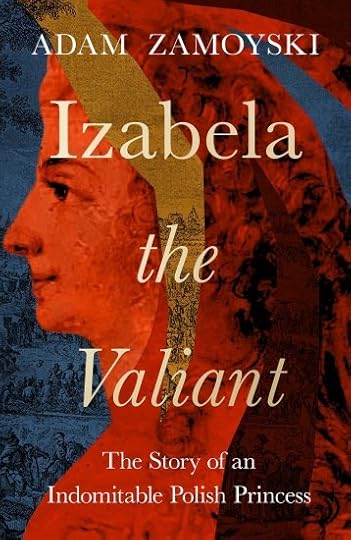
Izabela the Valiant: The Story of an Indomitable Polish Princess
Paperback – 19 June 2025 (UK)
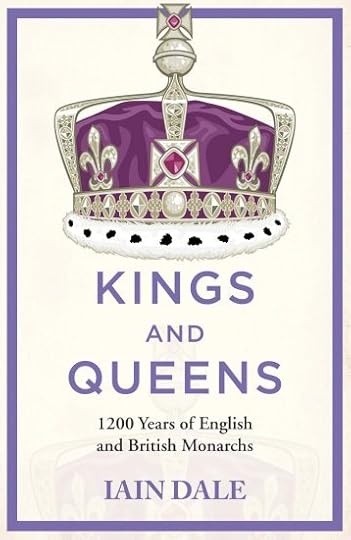
Kings and Queens: 1200 Years of English and British Monarchs
Paperback – 19 June 2025 (UK)
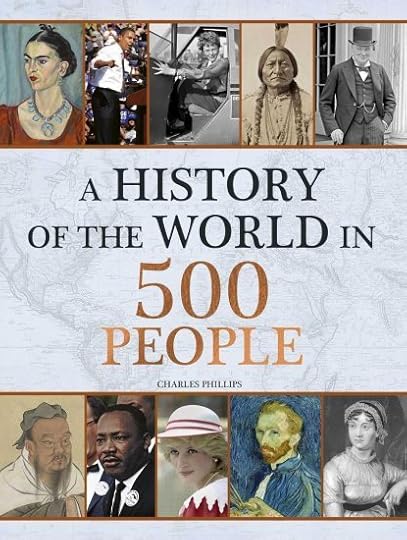
History of the World in 500 People
Hardcover – 17 June 2025 (US)
[no image yet]
The King’s Physician: Lillias Hamilton at the Harem and Court of Amir ‘Abd Al-Rahman, King of Afghanistan (Women and Gender: The Middle East and the Islamic World)
Hardcover – 19 June 2025 (US)
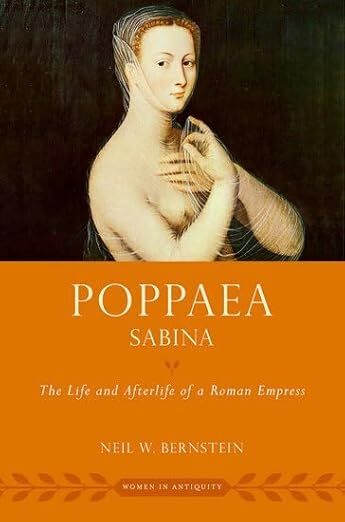
Poppaea Sabina: The Life and Afterlife of a Roman Empress (Women in Antiquity)
Hardcover – 20 June 2025 (US)
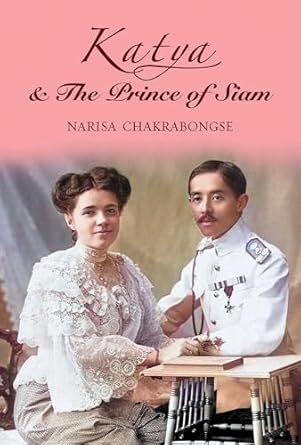
Katya & The Prince of Siam
Paperback – 16 June 2025 (UK)
The post Book News Week 25 appeared first on History of Royal Women.
June 12, 2025
Royal Wedding Recollections – Prince Carl Philip of Sweden and Sofia Hellqvist
We are taking a look back at the royal wedding of Prince Carl Philip of Sweden to Sofia Hellqvist on 13 June 2015.
Prince Carl Philip married Sofia Hellqvist in the Royal Chapel of Stockholm Palace. The ceremony was aired live on SVT.
Right Reverend Lars-Göran Lönnermark and the Reverend Michael Bjerkhagen conducted the ceremony, which was attended by royal guests from across Europe and Asia. Guests included Queen Mathilde of the Belgians, the Duke and Duchess of Edinburgh (who were then the Earl and Countess of Wessex) and Princess Takamado of Japan.
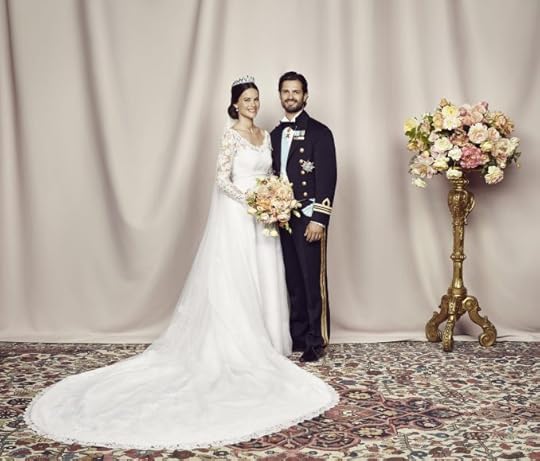 Photo: Mattias Edwall/The Royal Court of Sweden
Photo: Mattias Edwall/The Royal Court of SwedenAs the Swedish Royal Family is closely related to the Danish and Norwegian royal families, they were each represented several members: Queen Margrethe, then-Crown Prince Frederik, then-Crown Princess Mary, Prince Joachim, and Princess Marie of Denmark and Queen Sonja, Crown Prince Haakon, Crown Princess Mette-Marit, Princess Märtha Louise of Norway and her then husband, Ari Behn.
Princess Sofia wore a bespoke wedding gown designed by Ida Sjöstedt and a new emerald and diamond tiara gifted to her by King Carl Gustaf and Queen Silvia.
 Photo: Pontus Lundahl/The Royal Court of Sweden
Photo: Pontus Lundahl/The Royal Court of SwedenSalem Al Fakir, David Pagmar and Samuel Ljungblahd provided vocals during the wedding with songs including “Fix You” by Coldplay and the Swedish version of “Umbrella.”
Prince Carl Philip’s best man was his friend, Jan-Åke Hansson, and Sofia’s bridesmaids were Princess Estelle (niece of Prince Carl Philip), Anaïs and Chloe Sommerlath (groom’s cousins), and Tiara Larsson (Sofia’s goddaughter).
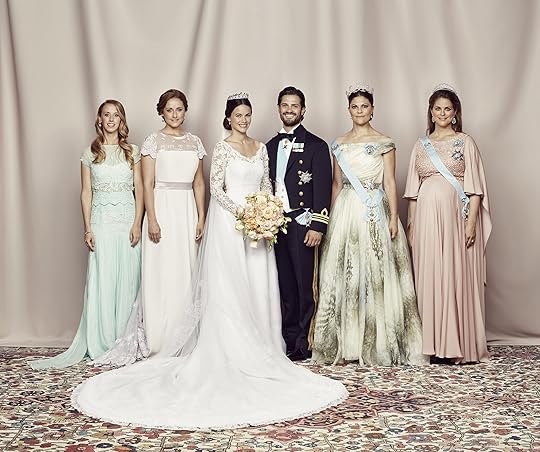
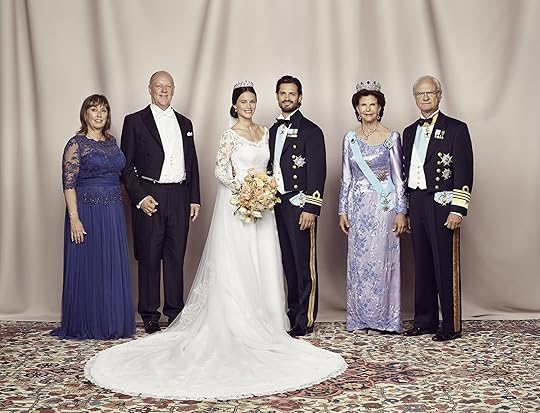
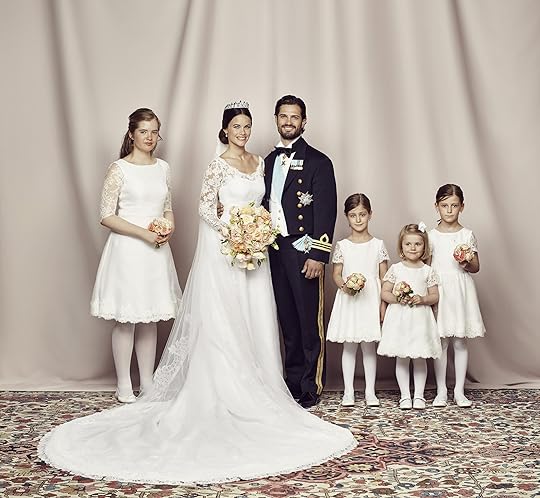
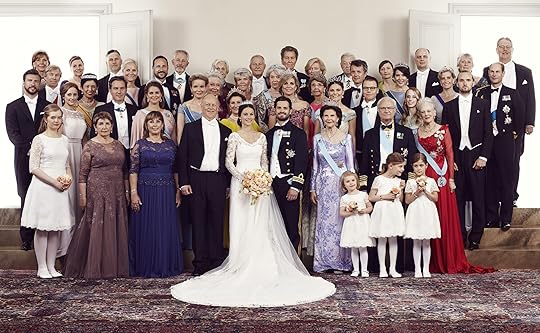
After the ceremony, the couple greeted the public outside the church before riding in a horse-drawn carriage around Stockholm. Prince Carl Philip and Princess Sofia waved to the crowds from the balcony of the Royal Palace, and the groom gave a short speech before the King led four cheers (a Swedish tradition) for the couple.
The party continued in the White Sea Hall and King Karl XI’s Gallery throughout the night, featuring performances by Avicii and a wedding cake that included pop rocks candy.
 Photo: Jonas Ekströmer/The Royal Court of Sweden
Photo: Jonas Ekströmer/The Royal Court of SwedenThe post Royal Wedding Recollections – Prince Carl Philip of Sweden and Sofia Hellqvist appeared first on History of Royal Women.
Taking a look at Infanta Cristina at 60
Infanta Cristina of Spain was born on 13 June 1965 as the daughter of the future King Juan Carlos I of Spain and Princess Sophia of Greece and Denmark. She was their second daughter. Her elder sister is Infanta Elena (born 1963), and her younger brother is King Felipe VI (born 1968). Felipe went ahead of his sisters in the line of succession because Spain still practices male-preference primogeniture.
Embed from Getty ImagesCristina was born at the Our Lady of Loreto Sanatorium in Madrid. On 21 June, she was baptised at the Zarzuela Palace by the Archbishop of Madrid. She received the names Cristina Federica Victoria Antonia de la Santísima Trinidad. Her godparents were Alfonso, Duke of Anjou and Cádiz, who was her first cousin once removed, and her great-aunt, Infanta Maria Cristina of Spain, Countess Marone-Cinzano. Her father became King of Spain in 1975, and Cristina became third in the line of succession, behind her elder sister and younger brother. She is currently sixth in the line of succession.
Embed from Getty ImagesCristina attended the Santa María del Camino School and later graduated with a degree in political science from the Universidad Complutense de Madrid in 1989. She also received a Master’s Degree in international relations from New York University in 1990. She speaks Spanish, Catalan, English, French and Greek. She participated in the Tornado event as a sailor in the 1988 Summer Olympics.
Embed from Getty ImagesCristina married fellow athlete Iñaki Urdangarin at Barcelona Cathedral on 4 October 1997. She wore a dress designed by Spanish designer Lorenzo Caprile. For her wedding, she was created Duchess of Palma de Mallorca for life, and her husband became known as Duke of Palma de Mallorca. They went on to have four children together: Juan (born 1999), Pablo (born 2000), Miguel (born 2002) and Irene (born 2005). Her children follow her in the line of succession.
Embed from Getty ImagesEmbed from Getty ImagesEmbed from Getty ImagesCristina’s husband was investigated in a fraud case, which also seemed to implicate Cristina. During the case, Cristina and her children moved to Geneva. She was formally charged with tax fraud and money laundering in 2014, but she denied any knowledge of her husband’s activities. In 2015, her brother removed her title of Duchess of Palma de Mallorca but she kept her title of Infanta and her place in the line of succession.1 She was eventually acquitted of the charges, but her husband was convicted and sentenced to six years and three months. He began his sentence in 2018, and in 2021, he was put on supervised release.
Embed from Getty ImagesTheir separation was announced in early 2022, and the couple officially divorced in December 2023.
Embed from Getty ImagesBefore the corruption scandal, Cristina performed royal duties, but she has not performed any since 2011. She now spends most of her time back in Spain with her children.
The post Taking a look at Infanta Cristina at 60 appeared first on History of Royal Women.
June 10, 2025
Queen U of Goguryeo -The Twice Crowned Korean Queen
Queen U of Goguryeo was queen consort to two Korean kings. She married King Gogukcheon of Goguryeo first. However, she failed to produce an heir. Without an heir, there arose a royal crisis after King Gogukcheon’s death. Queen U displayed remarkable political acumen as she navigated through the royal crisis to find a worthy successor to King Gogukcheon of Goguryeo’s throne.[1]
The birthdate of Queen U of Goguryeo is unknown.[2] She was the daughter of a nobleman named U So from Yeonna Province.[3] In 180 C.E., she married King Gogukcheon of Goguryeo and became queen. Because Queen U’s relatives were King Gogukcheon’s sole power base, they often abused their wealth and influence.[4] King Gogucheon tried to put an end to it by killing some of Queen U’s relatives.[5] In 190 C.E., Queen U’s relatives started a rebellion against King Gogukcheon.[6] King Gogukcheon suppressed the rebellion.[7] He then strengthened his royal authority by appointing officials from different noble clans.[8]
Queen U failed to produce a son.[9] Therefore, King Gogukcheon died without an heir in 197 C.E. In order to prevent any conflict from occurring over the royal succession, Queen U did not reveal her husband’s death immediately.[10] Queen U had to decide which of King Gogukcheon’s brothers should become the next king.[11] She met with the elder prince named Balgi first.[12]
Queen U said to Prince Balgi, “As His Majesty has sired no heir, I believe Your Highness should succeed him.”[13] Prince Balgi said, “We must not discuss this matter imprudently because the Mandate of Heaven should know where to turn.”[14] Then, he rebuked her by saying, “Furthermore, how can this be the manner of a decent lady as you have come to see your brother-in-law in the middle of the night?”[15] Queen U was embarrassed and immediately went to see her second brother-in-law, Prince Yeonu.[16]
Prince Yeonu welcomed Queen U.[17] He cut his finger while cutting meat for her.[18] Queen U bounded his bleeding finger with a strap that came from her skirt.[19] Then, Prince Yeonu escorted Queen U to the palace.[20] The next day, Queen U announced King Gogukcheon’s death.[21] She also said that it was his will that Prince Yeonu should be the next King of Goguryeo.[22]
Prince Balgi was enraged that he was not chosen as the next King of Goguryeo.[23] He tried to start a rebellion but failed due to lack of support.[24] He fled to Liaodong.[25] There, Prince Balgi attacked Goguryeo but was defeated by his younger brother, Prince Gyesu.[26] After he was defeated, Prince Balgi committed suicide.[27] Prince Balgi’s suicide strengthened Prince Yeonu’s claim to the throne.[28] Prince Yeonu ascended the throne as King Sansang.[29]
King Sansang married Queen U.[30] Therefore, she was invested as queen for the second time.[31] However, Queen U failed to produce an heir with King Sansang.[32] In 208 C.E., King Sansang had an affair with a beautiful woman (whose name is unknown) from the village of Jutongchon.[33] When Queen U learned of the affair, she wanted to kill the woman.[34] However, she soon learned that the woman was with child.[35] The woman was brought to the palace and became a royal concubine.[36] In 209 C.E., she gave birth to a son named Uweigeo.[37]
In 227 C.E., King Sansang died. Prince Uweigeo ascended the throne of Goguryeo as King Dongcheon. He gave Queen U the title of Queen Dowager.[38] This was to show her filial respect and courtesy.[39] In 234 C.E., Queen Dowager U died. King Dongcheon fulfilled her wish by burying her next to King Sansang’s tomb instead of King Gogukcheon’s tomb.[40]
Queen U of Goguryeo stands out in Korean history for marrying two kings.[41] Scholars have praised her for her extraordinary political skills.[42] Through her intellect, she installed a king of her own choice.[43] Thus, she lived according to her own terms.[44] Queen U has recently garnered attention worldwide through popular media. In late August, a Paramount+ TV show loosely based on her life called Queen Woo (in which she is played by Jeon Jong-Seo) aired for eight episodes.
Sources:
“King Sansang”. (2014). Encyclopedia of Korean Folk Literature. (Chong, M., Ed.) South Korea: National Folk Museum of Korea. pp. 150-151.
“The Queen’s relatives, Eobiryu and Jwagarye, plot a rebellion with the Four Yeonna (September 190) [왕후의 친척인 어비류와 좌가려가 4연나와 함께 반란을 도모하다 ( 190년 09월 )]”. (n.d.). Samguk Sagi. (In Korean). National Institute of Korean History. Retrieved on November 20, 2024 from https://db.history.go.kr/ancient/leve....
Lee, B. (2008). Women in Korean History. South Korea: Ewha Womans University Press.
[1] Lee, 2008
[2] Lee, 2008
[3] Lee, 2008
[4] “The Queen’s relatives, Eobiryu and Jwagarye, plot a rebellion with the Four Yeonna (September 190) [왕후의 친척인 어비류와 좌가려가 4연나와 함께 반란을 도모하다 ( 190년 09월 )]”, n.d.
[5] “The Queen’s relatives, Eobiryu and Jwagarye, plot a rebellion with the Four Yeonna (September 190) [왕후의 친척인 어비류와 좌가려가 4연나와 함께 반란을 도모하다 ( 190년 09월 )”], n.d.
[6] “The Queen’s relatives, Eobiryu and Jwagarye, plot a rebellion with the Four Yeonna (September 190) [왕후의 친척인 어비류와 좌가려가 4연나와 함께 반란을 도모하다 ( 190년 09월 )]”, n.d.
[7] “The Queen’s relatives, Eobiryu and Jwagarye, plot a rebellion with the Four Yeonna (September 190) [왕후의 친척인 어비류와 좌가려가 4연나와 함께 반란을 도모하다 ( 190년 09월 )]”, n.d.
[8] “The Queen’s relatives, Eobiryu and Jwagarye, plot a rebellion with the Four Yeonna (September 190) [왕후의 친척인 어비류와 좌가려가 4연나와 함께 반란을 도모하다 ( 190년 09월 )]”, n.d.
[9] Chong, Ed., 2014
[10] Lee, 2008
[11] Lee, 2008
[12] Chong, Ed., 2014
[13] Lee, 2008, p. 122
[14] Lee, 2008, pp. 122-123
[15] Lee, 2008, p. 123
[16] Lee, 2008
[17] Chong, Ed., 2014
[18] Lee, 2008
[19] Lee, 2008
[20] Lee, 2008
[21] Lee, 2008
[22] Lee, 2008
[23] Lee, 2008
[24] Lee, 2008
[25] Lee, 2008
[26] Chong, Ed., 2014
[27] Chong, Ed., 2014
[28] Chong, Ed., 2014
[29] Chong, Ed., 2014
[30] Lee, 2008
[31] Lee, 2008
[32] Lee, 2008
[33] Chong, Ed., 2014
[34] Chong, Ed., 2014
[35] Chong, Ed., 2014
[36] Lee, 2008
[37] Chong, Ed., 2014
[38] Lee, 2008
[39] Lee, 2008
[40] Lee, 2008
[41] Lee, 2008
[42] Lee, 2008
[43] Lee, 2008
[44] Lee, 2008
The post Queen U of Goguryeo -The Twice Crowned Korean Queen appeared first on History of Royal Women.
June 9, 2025
The Year of Queen Sālote Tupou III – The double wedding of her sons
Queen Sālote of Tonga had two sons who survived to adulthood. Her third son, Prince Uiliami Tuku‘aho, died at the age of 16 of dropsy.
Her two surviving sons, Siaosi Tāufaʻāhau Tupoulahi and Sione Ngū Manumataongo, were married in a double wedding. The European-style wedding took place on 10 June 1947.
For Tuʻipelehake, as Prince Sione Ngū was then known, his future wife was Melenaite Tupou Moheofo, who was a great-granddaughter of the last Tu’i Tonga (from a line of Tongan Kings). She was educated at Ravenswood Methodist School for Girls in Sydney. The Crown Prince reportedly spotted Halaevalu Mataʻaho ʻAhomeʻe in 1945 when she was helping to serve food during the centenary celebrations, and he decided that she should be his wife.
A double wedding was organised so that the people wouldn’t be burdened with the cost of two separate weddings. The two couples were married by A.E. McKay, President of the Free Wesleyan Church in the Royal Chapel. They were blessed by Rodger Page and John Burton, President-General of the Methodist Church of Australasia.
Embed from Getty ImagesPacific Islands Monthly wrote, “From the royal pew, Queen Sālote watched the proceedings with evident pleasure. After the wedding, some 350 guests were entertained by Her Majesty in palm-covered shelters overlooking the lagoon, before the royal palace. Visitors from overseas included the Maori Princess Te Puea, and representatives of the Fiji and Samoan people. […] Two five-tiered wedding cakes were ceremonially cut. After the formal breakfast, the Queen received her guests on the steps in front of the palace.”1
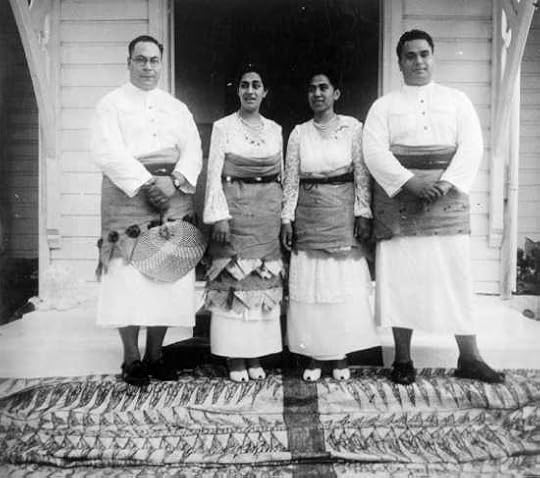 Royal bridal party, Tonga. New Zealand Free Lance : Photographic prints and negatives. Ref: PAColl-5469-055. Alexander Turnbull Library, Wellington, New Zealand. /records/22856543
Royal bridal party, Tonga. New Zealand Free Lance : Photographic prints and negatives. Ref: PAColl-5469-055. Alexander Turnbull Library, Wellington, New Zealand. /records/22856543Two days later, on 12 June, a Tongan-style wedding was held.
“Two days later, the wedding ceremony was repeated in Tongan fashion. The brides wearing feathered garments and wrapped about with fine mats, and the bride-grooms, dressed in tapa decorated with leaves and scented flowers, were helped on to a dais of mats, piled to a height of 6 feet. Presents of mats, tapa, kava roots and pigs were exchanged with full formality; and then the elaborate kava ceremony, which was the key feature of the Tonga wedding, was performed.”2
Queen Sālote was delighted to have daughters at last, and she was especially fond of Melenaite, whom she often took with her, even on extended visits. Her first grandchildren were born the following year as the Crown Prince’s wife, Halaevalu Mataʻaho, gave birth to a son on 4 May 1948, followed by a daughter born to Melenaite on 12 May 1948.
The post The Year of Queen Sālote Tupou III – The double wedding of her sons appeared first on History of Royal Women.
June 8, 2025
Parysatis I Shahbanu – The Babylonian Queen who had a large spy network
Parysatis I Shahbanu was one of the most powerful queens of the Achaemenid Empire.[1] She was the daughter of King Artaxerxes I. She was also the queen consort to her half-brother, King Darius II Ochus. She was the mother of King Artaxerxes II. Parysatis I Shahbanu received vast land holdings.[2] She also had a large spy network.[3]
The birthdate of Parysatis I Shahbanu is unknown.[4] She was the daughter of King Artaxerxes I of the Achaemenid Empire.[5] Her mother was Andia, one of King Artaxerxes I’s lesser wives.[6] Her half-brothers were King Xerxes II, King Sogdianus, and Prince Darius II Ochus.[7] Her father arranged for Princess Parysatis I to marry her half-brother, Prince Darius II Ochus.[8] In 424 B.C.E., Darius II Ochus became King of the Achaemenid Empire. Parysatis I became queen.
Parysatis I Shahbanu was very influential during King Darius II Ochus’s reign.[9] Ancient chroniclers say that she maintained a spy network that would uncover any disloyalty throughout the Achaemenid Empire.[10] Parysatis I Shahbanu had a daughter named Princess Amestris.[11] She had two sons named Prince Artaxerxes II and Prince Cyrus the Younger.[12]
Parysatis I Shahbanu had cities that were dedicated to her located in Syria at Halys River.[13] The cities’ residents had to pay taxes to the queen.[14] This corroborates with Herodotus’s statement who claims that the Egyptian city of Anthylla supplied shoes to Parysatis I Shahbanu.[15] She also received wine, livestock, and bread from these holdings.[16] Historians believed that her holdings were managed by slaves.[17] One Babylonian document mentions that Parysatis I Shahbanu rented one of her estates (which was situated near Nippor) “to the house of Murashu.”[18]
In 404 B.C.E., King Darius II Ochus of the Achaemenid Empire died. King Artaxerxes II became the next king.[19] However, Parysatis I Shahbanu tried to put her second son, Prince Cyrus the Younger, on the Babylonian throne.[20] She urged Prince Cyrus the Younger to overthrow King Artaxerxes II.[21] However, Prince Cyrus the Younger was defeated at the Battle of Cunaxa.[22] This battle consolidated King Artaxerxes II’s reign.[23] Parysatis I Shahbanu tried to stop King Artaxerxes II from killing Prince Cyrus the Younger but failed.[24]
During King Artaxerxes II’s reign, Parysatis I Shahbanu was still very influential.[25] She was locked in a bitter power struggle with her daughter-in-law, Stateira I Shahbanu.[26] The rivalry finally ended when Parysatis I Shahbanu poisoned Stateira I Shahbanu through a servant named Gigis.[27] When King Artaxerxes II learned of his wife’s death, he was enraged.[28] King Artaxerxes II banished Parysatis I Shahbanu to Babylon.[29] Parysatis I Shahbanu’s exile did not last long.[30] Instead, King Artaxerxes II recalled his mother back to the palace.[31] Once she arrived, she quickly regained all her influence in court.[32] She used her influence to put Tissaphernes (the Satrap of Lydia) to death.[33] After Tissaphernes’s execution, no more is mentioned of her in ancient texts.[34] There is no mention of when or how she died.[35]
Parysatis I Shahbanu was very influential through the reigns of King Darius II Ochus and King Artaxerxes II.[36] She tried to put her younger son on the throne and even murdered her own daughter-in-law, Stateira I Shahbanu.[37] Yet, King Artaxerxes II listened to her advice and executed Tissaphernes.[38] She even had cities that paid taxes to her.[39] Therefore, Parysatis I Shahbanu will still be one of the most controversial figures in history.[40]
Sources:
Dandamaev, M. A., et al.(2004). The Culture and Social Institutions of Ancient Iran. United Kingdom: Cambridge University Press.
Jackson, G. M. (2009). Women Leaders of Africa, Asia, Middle East, and Pacific. United States: Xlibris.
“Parysatis I (fl. 440–385 BCE)”. (2007). In A. Commire & D. Klezmer (Eds.), Dictionary of Women Worldwide: 25,000 Women Through the Ages (Vol. 2, p. 1481). Yorkin Publications.
Smith, W. (1873). “Parysatis or Parysatis Ochus”. A Dictionary of Greek and Roman Biography and Mythology. London: Spottiswoode and Co. Retrieved on November 18, 2024 from https://www.perseus.tufts.edu/hopper/....
Ussher, J. (2003). The Annals of the World. Green Forest, AR: New Leaf Publishing Group, Incorporated.
[1] Jackson, 2009
[2] Dandamaev, et al., 2004
[3] “Parysatis I (fl. 440–385 BCE).”
[4] Smith, 1873
[5] “Parysatis I (fl. 440–385 BCE).”
[6] “Parysatis I (fl. 440–385 BCE).”
[7] Smith, 1873
[8] “Parysatis I (fl. 440–385 BCE).”
[9] “Parysatis I (fl. 440–385 BCE).”
[10] “Parysatis I (fl. 440–385 BCE).”
[11] “Parysatis I (fl. 440–385 BCE).”
[12] “Parysatis I (fl. 440–385 BCE).”
[13] Dandamaev, et al., 2004
[14] Dandamaev, et al., 2004
[15] Dandamaev, et al., 2004
[16] Dandamaev, et al., 2004
[17] Dandamaev, et al., 2004
[18] Dandamaev, et al., 2004, p. 136
[19] Jackson, 2009
[20] Jackson, 2009
[21] Jackson, 2009
[22] Jackson, 2009
[23] Jackson, 2009
[24] Smith, 1873
[25] Smith, 1873
[26] Smith, 1873
[27] Ussher, 2003
[28] Smith, 1873
[29] Smith, 1873
[30] Smith, 1873
[31] Smith, 1873
[32] Smith, 1873
[33] Smith, 1873
[34] Smith, 1873
[35] Smith, 1873
[36] Jackson, 2009
[37] Jackson, 2009; Smith, 1873
[38] Smith, 1873
[39] Dandamaev, et al., 2004
[40] Jackson, 2009
The post Parysatis I Shahbanu – The Babylonian Queen who had a large spy network appeared first on History of Royal Women.
June 7, 2025
Book News Week 24
Book News week 24- 9 June – 15 June 2025

The Children of Charles the Second: The Merry Monarch’s Fourteen Bastards
Hardcover – 12 June 2025 (US)
The post Book News Week 24 appeared first on History of Royal Women.
June 6, 2025
Lady Xoc – The powerful Mayan Queen who performed various auto-sacrificial rituals
Lady Xoc is one of the most prominent and powerful Mayan queens in history.[1] She was the queen consort to her nephew, King Itzamnaaj B’ahlam III of Yaxchilan (also known as Shield Jaguar III).[2] During her husband’s reign, Lady Xoc performed bloodletting rituals.[3] These rituals helped increase King Itzamnaaj B’ahlam III’s leadership of Yaxchilan.[4]
The birth date of Lady Xoc (also known as Lady Fist Fish[5]) is unknown.[6] She came from an elite Yaxchilan family. Her mother was Lady Xibalba.[7] Her father was Lord Aj K’an Xoc.[8] Her older sister was Lady Pakal, the queen consort to King Yaxun B’ahlam III of Yaxchilan.[9] Lady Xoc married her nephew, Prince Itzamnaaj B’ahlam III.[10]
In 681 C.E., King Yaxun B’alam III of Yaxchilan died. On 23 October 681 C.E., Itzamnaaj B’ahlam III ascended the throne as King of Yaxchilan. During her husband’s coronation ceremony, Lady Xoc performed the transfer of power ceremony through a bloodletting ritual.[11] She pierced her tongue by pulling a rope that was studded with obsidian blades.[12] Once Itzamnaaj B’ahlam III was king, this made Lady Xoc the Queen of Yaxchilan.[13] Lady Xoc was given both political and cultural authority in the Mayan city-state of Yaxchilan.[14] Throughout her husband’s reign, Lady Xoc performed many bloodletting rituals.[15]
King Itzamnaaj B’ahlam III of Yaxchilan dedicated a Mayan Temple known as Structure 23 to his wife, Lady Xoc.[16] It is the only known Mayan temple that was specifically built to honour a woman.[17] In the structure, there are various lintels of her conducting religious rituals.[18] Over the doorways of Structure 23, there are carved lintels of Lady Xoc that depict her ritual ceremonies.[19] Lintel 24 shows Lady Xoc’s bloodletting scene during her husband’s coronation.[20] In direct sequence, Lintel 25 shows Lady Xoc experiencing a hallucination of a double-headed serpent.[21] The serpent emits Yat B’ahlam (the founder of her husband’s dynasty).[22] On Lintel 26, Lady Xoc’s visions help her husband prepare for battle.[23] Lady Xoc wears a headdress that is usually worn by other Mayan kings in other city-states.[24] This bloodletting ceremony took place on 28 October 709 C.E.[25] These rituals helped link her husband with the Mayan deities and established his divine rule.[26]
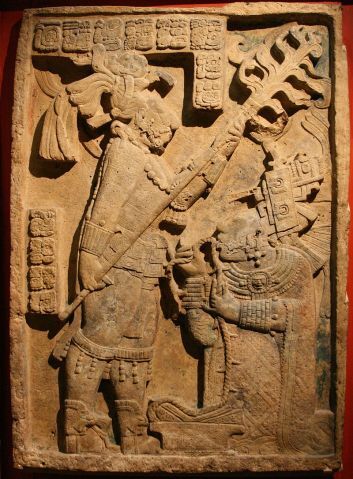 The bloodletting ritual on Lintel 24 – Photo by Michel wal – CC BY-SA 3.0
The bloodletting ritual on Lintel 24 – Photo by Michel wal – CC BY-SA 3.0Many scholars believe that Lady Xoc had no surviving sons.[27] Late in his reign, King Itzamnaaj B’ahlam III took a secondary wife named Lady Ik’ Skull (also known as Lady Eveningstar) who was from Calakmul.[28] Lady Ik’ Skull bore King Itzamnaaj B’ahlam III a son named Prince Yaxun B’ahlam IV (also known as Bird Jaguar IV). On 15 June 742 C.E., King Itzamnaaj B’ahlam III of Yaxchilan died. Yaxun B’ahlam IV succeeded his father as King of Yaxchilan ten years later on 3 May 752 C.E.[29] During this ten-year gap between the two kings, Lady Xoc’s life remains unknown.[30] The only known fact about Lady Xoc after her husband’s death is her death date.[31] King Yaxun B’ahlam IV recorded her death date to pay homage to Lady Xoc.[32] Lady Xoc died on 3 April 749 C.E.
Very few facts about Lady Xoc are known.[33] However, it is clear she played a critical role during her husband’s reign.[34] She was very powerful and helped conduct many religious rituals for her husband.[35] Through her bloodletting rituals, she linked her husband’s reign with the divine gods.[36] This consolidated his power and maintained his reign.[37] Hopefully, more information on this important and prominent Mayan queen will soon be revealed.
Sources:
Bruhns, K. O., & Stothert, K. E. (2014). Women in Ancient America: Second Edition. Norman, OK: University of Oklahoma Press.
Goucher, C., Ed. (2022). Women Who Changed the World: Their Lives, Challenges, and Accomplishments Through History [4 Volumes]. NY: ABC-CLIO.
Hinnels, J. R., Ed. (1991). Who’s Who of World Religions. United Kingdom: Palgrave Macmillan UK.
Inomata, T. (2008). “Women in Classic Maya Royal Courts”. Servants of the Dynasty: Palace Women in World History. (Walthall, A., Ed). Oakland, CA: University of California Press. pp.45-65.
Matthews, P. (1988). The Sculpture of Yaxchilan. New Haven, CT: Yale University Press.
McLeod, A. (2023). An Introduction to Mesoamerican Philosophy. United Kingdom: Cambridge University Press.
Newsome, E. A. (2010). Trees of Paradise and Pillars of the World: The Serial Stelae Cycle of “18-Rabbit–God K,” King of Copan. Austin, TX: University of Texas Press.
Petras, K., & Petras, R. (2022). A History of the World Through Body Parts: The Stories Behind the Organs, Appendages, Digits, and the Like Attached to (or Detached From) Famous Bodies. San Francisco, CA: Chronicle Books LLC.
Sand, E. (2001). Woman Ruler: Woman Rule. Lincoln, Nebraska: iUniverse.
Sokolow, J. A. (2016). The Great Encounter: Native Peoples and European Settlers in the Americas, 1492-1800. United Kingdom: Taylor & Francis.
Tate, C. E. (2013). Yaxchilan: The Design of a Maya Ceremonial City. Austin, TX: University of Texas Press.
[1] Bruhns and Stothert, 2014
[2] Tate, 2013
[3] Goucher, Ed., 2022
[4] Hinnells, Ed., 1991
[5] Matthew, 1988
[6] Tate, 2013
[7] Tate, 2013
[8] Tate, 2013
[9] Tate, 2013
[10] Tate, 2013
[11] Goucher, Ed., 1991
[12] Goucher, Ed., 1991
[13] Goucher, Ed., 1991
[14] McLeod, 2023
[15] McLeod, 2023
[16] Goucher, Ed. 1991
[17] Goucher, Ed., 1991
[18] Goucher, Ed. 1991
[19] Goucher, Ed. 1991
[20] Goucher, Ed., 1991
[21] Newsome, 2010
[22] Newsome, 2010
[23] Petras and Petras, 2022
[24] Tate, 2013
[25] Sokolow, 2016
[26] Hinnells, Ed., 1991
[27] Goucher, Ed., 1991
[28] Inomata, 2008
[29] Sand, 2000
[30] Sand, 2000
[31] Sand, 2013
[32] Tate, 2013
[33] Tate, 2013
[34] McLeod, 2023
[35] Tate, 2013
[36] Hinnels, Ed., 1991
[37] Hinnels, Ed., 1991
The post Lady Xoc – The powerful Mayan Queen who performed various auto-sacrificial rituals appeared first on History of Royal Women.



